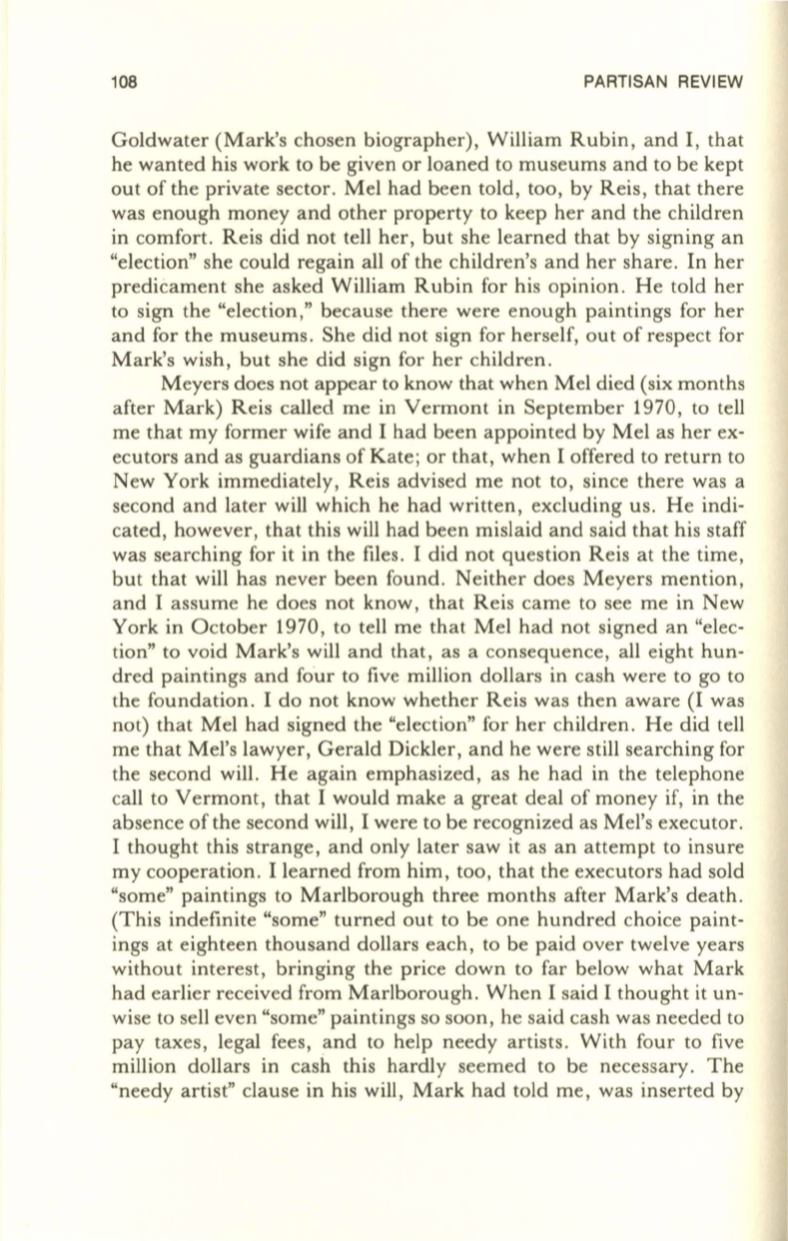
108
PARTISAN REVIEW
Goldwater (Mark's chosen biographer), William Rubin, and I , that
he wanted his work to be given or loaned to museums and to be kept
out of the private sector. Mel had been told , too, by Reis , that there
was enough money and other property to keep her and the children
in comfort. Reis did not tell her, but she learned that by signing an
"election" she could regain all of the children's and her share . In her
predicament she asked William Rubin for his opinion . He told her
to sign the "election," because there were enough paintings for her
and for the museums. She did not sign for herself, out of respect for
Mark's wish, but she did sign for her children .
Meyers does not appear to know that when Mel died (six months
after Mark) Reis called me in Vermont in September 1970, to tell
me that my former wife and I had been appointed by Mel as her ex–
ecutors and as guardians of Kate; or that, when I offered to return to
New York immediately, Reis advised me not to, since there was a
second and later will which he had written, excluding us. He indi–
cated, however, that this will had been mislaid and said that his staff
was searching for it in the files. I did not question Reis at the time,
but that will has never been found . Neither does Meyers mention,
and I assume he does not know, that Reis came to see me in New
York in October 1970, to tell me that Mel had not signed an "elec–
tion" to void Mark's will and that, as a consequence, all eight hun–
dred paintings and four to five million dollars in cash were to go to
the foundation. I do not know whether Reis was then aware (I was
not) that Mel had signed the "election" for her children. He did tell
me that Mel's lawyer, Gerald Dickler, and he were still searching for
the second will. He again emphasized, as he had in the telephone
call to Vermont, that I would make a great deal of money if, in the
absence of the second will, I were to be recognized as Mel's executor.
I thought this strange , and only later saw it as an attempt to insure
my cooperation. I learned from him, too, that the executors had sold
"some" paintings to Marlborough three months after Mark's death.
(This indefinite "some" turned out to be one hundred choice paint–
ings at eighteen thousand dollars each , to be paid over twelve years
without interest, bringing the price down to far below what Mark
had earlier received from Marlborough . When I said I thought it un–
wise to sell even "some" paintings so soon, he said cash was needed to
pay taxes, legal fees, and to help needy artists . With four to five
million dollars in cash this hardly seemed to be necessary. The
"needy artist" clause in his will, Mark had told me , was inserted by


